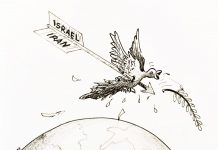
In my last column, I gave you samples of those indigenous toys that our children loved to play with before the advent of gadgets. Let me give you more, hoping to have these included should they be reintroduced for our children to play again.
Manog-banog is the local name for kite in English. But what makes it different is that this toy was homemade, not bought in toy stores. In cities and urban areas, children play with this especially during summertime when it’s dry season and windy as well. But again, their kites are commercial ones, bought from the stores and manufactured for mass production by certain companies. In rural areas, a kite is made, usually by children themselves. They use thin bamboo sticks and fashion them into a kite skeleton, which they later wrap in thin plastic material. Tied to a thin, long thread, they throw this toy into the air for it to fly.
If manog-banog is made to fly in the air, this next toy is made to float on water. They call it baru-baluto, a miniature banca. But this one is not necessarily made; it’s already shaped like a toy boat. It’s the sturdy covering of the coco fruits when these are still young and just emerging in between the hard, base part of coconut leaves. Children don’t need to cut it from the coconut stem, because, under the coconut trees, there are so many of these—dried already and one simply needs to detach it from other dead parts. It floats on water, and what a good indigenous toy it is.
The elongated part of the coconut leaves from which the long blades come out is called paklang in the vernacular. The base of it, when cut from the rest of the leaves, say, three feet from the base, is an excellent native toy called padaruosan. Its seeming head is large and wide enough, and when placed on the ground, it kind of stands like a cobra. A child can sit on its back, and although it doesn’t move by itself, it makes a good sliding vehicle when placed on a slanting hill. A child can sit on it and glide downhill for an exciting ride. But the ground has to be covered with carabao grasses or pure dry soil, no rocks. Or else, the kids could end up with cuts and wounds.
Another thing that people in the hinterlands fashion into a native toy is called kasing, shaped like a heart (kasing-kasing in the vernacular). It is made of wood. At the base of it, they attach a nail or small piece of tie wire. A little above the pointed base, they create a stopper for the piece of rope that coils around it. This tiny rope is made to coil higher until it reaches the biggest, round top. The other end of the rope is attached to the player’s finger. The player smashes this toy suddenly to the ground then, when it lands on the ground, it starts to spin around while standing on its metallic tip. It takes sometimes minutes before it stops. While spinning around, it also tends to like stroll here and there until it finally stops. One can play with it alone and enjoy its beauty and sight.
Out of several varieties of bamboo, more native toys were made. There is kadang, two bamboo poles with stepping slabs on them, which players can use to walk around at an elevated height. And then there is that musil-pusil, made of small bamboo branches, with crumpled wet papers for bullets. Bow and arrow locally known as pana were also made of bamboo slabs.
Indeed, indigenous toys that people made were numerous. I just mentioned a few of them. If only they are revived and reintroduced to our kids, especially as a requirement in schools, there is no doubt that they will enjoy playing with them, their attention diverted from gadget addiction.



